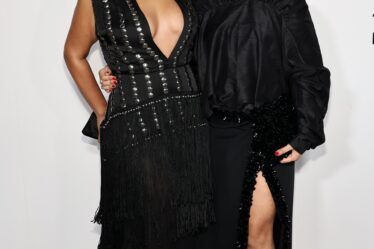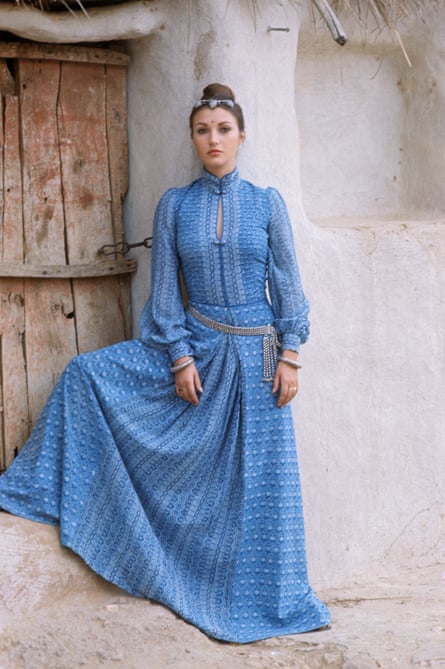
There is a colourful and sequined corner of every British woman’s wardrobe that is forever Monsoon. You’ve doubtless had a floaty blouse or two from them; perhaps a beaded bag. Surely it was the source of your sixth form leavers’ ball dress (heavily embellished, floor-length, right)? And if you say you’ve never run into an airport branch for a last-minute Monsoon swimsuit or sarong, no one will believe you.
Or perhaps you’re an OG; there back in 1973 when Peter Simon, founder of Monsoon (and Accessorize) and still its owner today, was selling Afghan-style coats so authentic they came with animal droppings. “I’d recently come back from being in a commune in Ibiza,” Simon recalls when we meet one afternoon at the Monsoon Accessorize headquarters in west London. In the style of the times, he’d previously dropped out of everything and travelled overland to Afghanistan. Now he was selling versions of that hippy favourite, the Afghan coat, on Portobello Road. “It was a version called the shoat – I made up the name – a cross between a sheep and a goat. And they were very authentic. I mean, they had bits of shit in the wool and when it rained you smelled like a sheepdog. Anyway, they were not commercial.”
Simon has a chunky bit of wood on his desk, a carved handblock from India – a daily reminder of how it all started to go right. A friend asked Simon if he could help shift some dresses his sister was making in India – “an amazing woman called Faith Hardy. She’d gone overland to India to Jaipur, I really loved the dresses, the Rajput-inspired clothes, I thought they were fantastic. There were vegetable dyes, handblock printing, hand-loomed cotton. It was green before green.”
In 1970s Britain, we must remember, almost everything was brown and clothes were all the same kind of boring. Those bright, joyful dresses speaking of different cultures and climes were rather more attractive to the eye than the shoat. “I started selling them to boutiques and then department stores, and then got sick of being the middle man.” Monsoon was born. The drop-out who railed against authority and capitalism did pretty well. Fifty years later, Simon’s wealth is estimated at around the £400-£600m mark, depending on which tabloid you read.
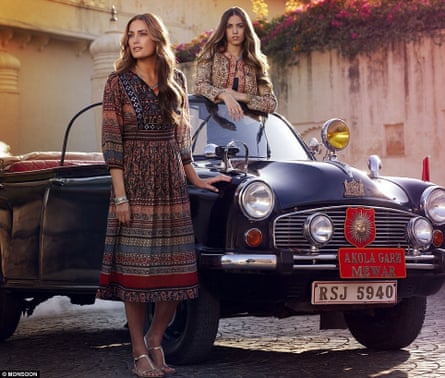
The handblock looks quaint in his glass-walled office on the fifth floor of a state-of-the-art building on the edge of Notting Hill, overlooking his “Yellow Campus”, a hub of buildings he’s built or redeveloped and where he is landlord over Stella McCartney and a number of other design and fashion brands.
Later, he walks me around the jaw-dropping Monsoon Art Collection: more than 300 works spread across three buildings, which include Carsten Höller’s full-sized fairground carousel, three Hockney paintings, a Bridget Riley and a Jeff Koons giant Easter egg, which he tries to ignore. The first piece he bought is parked by the window: the South Korean artist Kimsooja’s 1998 work, Cities on the Move – 11,633 Miles of Bottari Truck; a two-tonne Hyundai truck loaded with bundles of colourful bottari or fabric sacks. “It reminds me of when the fabric used to come back from the villages in China,” says Simon. “They arrived on the back of a rickshaw, big bundles of colourful fabric, which would be cut and made into clothes.”
In celebration of its 50 years, the brand has currently created a pop-up vintage shop down the road from its original Portobello Road market store, selling old Monsoon treasures alongside other designers from the era. But a lot has happened since then. Monsoon tracks the story of the past five decades of British shopping like no other. It went through the high street boom of the 1980s to become a household name – so successful that Simon did what many other founders did and sold a chunk to the City. “A mistake,” he says, firmly. “Even though it was only 25%, it never felt wholly mine after that and there was the constant pressure for growth.” He bought it all back in 2007 and it then struggled through the digital revolution and demise of bricks-and-mortar shops, only to hit the pandemic. Monsoon went into administration and Simon rescued it by buying it out of the holding company, that he owned. It is now back in profit, somehow surviving the changing tastes of one of the world’s tougher crowds: our nation’s female shopper.
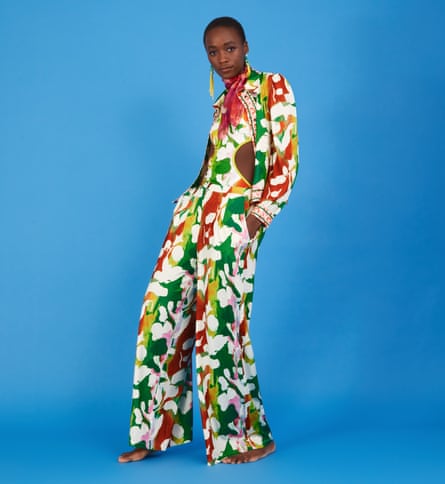
“We’ve got very strong categories,” he says, by way of explanation. “Beach: we recognised some time ago that Monsoon is a great destination if you’re going on holiday. We’ve always had a really strong Occasion category. I can remember going back to the 70s and the mothers and daughters coming in and buying their daughters their first prom dresses. And Kids has always been great for us. We’ve just opened our first standalone children’s store in Westfield Stratford.” He always wanted a children’s store with an entrance just for the kids – this one has it – a child-height rainbow doorway.
“Look at the competitors out there – Zara does a fantastic job. And there are other brands that do great jobs, but they don’t have the heritage,” he says. “They don’t have the background. They don’t have the artisanal quality. Or the craft base.” Some might not recognise that as something Monsoon has always maintained in its battle to keep up with fast-fashion. And while Monsoon started out as a founding member of the Ethical Trading Initiative, those standards must have been hard to keep up. “I’m not holding my hand up and saying we are fairer than fair. We strive very hard in India to see that our production processes are OK, going back down the line, but we’re not perfect. And if we find out that something is wrong, we will go into it. I didn’t work out of Bangladesh for years because I knew things were wrong there. But now we’re working with factories that are possibly even better than the ones we have in India.”
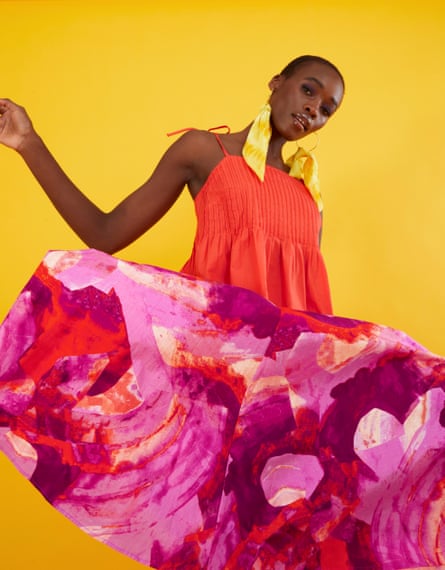
The Monsoon design team is located outside Simon’s office and despite the glass and steel and monitors and screens, there is a distinct art school vibe to the environment. Vivid handpainted prints are stuck up on glass walls, bolts of fabric piled up on desks, paint pots and pens; evidence that artistic handwork still exists. Simon likes this part of the building. He has huge respect for the creative team, particularly Caroline Jackson, the design director. Although he never went to art school himself, after five decades his eye is acutely trained and he’s often called in for an opinion on a print.
“I think with Caroline we’ve got the product right. She has amplified what had been the origins and the foundation of Monsoon and done an amazing job. Prints, particularly, and the production of them and hand embroidery, block printing and all the crafts that are there are in India, we try to put them at the forefront to the best of our ability. Commercially it’s sometimes difficult, but the Originals collection, for instance, gives us an opportunity to do things like we did at the beginning.”
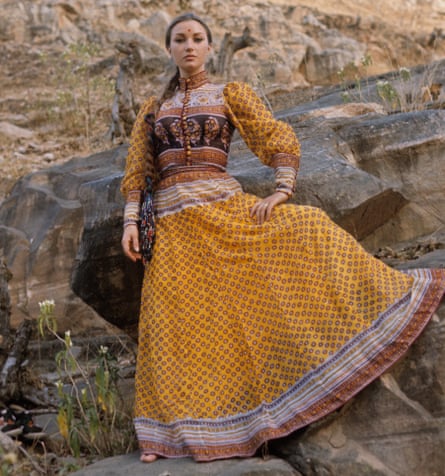
The Originals is one part of the Monsoon Turns 50 anniversary collection, inspired by archive designs – those bohemian dresses in vividly dyed heavy cottons with bold flower and animal embroideries that you could wear to a picnic this weekend and everyone would congratulate you on your smart vintage find. The two other sub-collections have been designed by students from the School of Design & Technology at London College of Fashion, UAL – a contemporary take on print and colour, including dramatic floaty printed two-pieces, jumpsuits and swimwear. And designs by NIFT (National Institute of Fashion Technology) in New Delhi are richly embellished with heritage handwork, highly detailed figurative embroideries and block printing over bright Indian colour. It evokes that same sense of heat and light and escape that attracted women to the stall in Portobello back in the day. But without the animal droppings.


